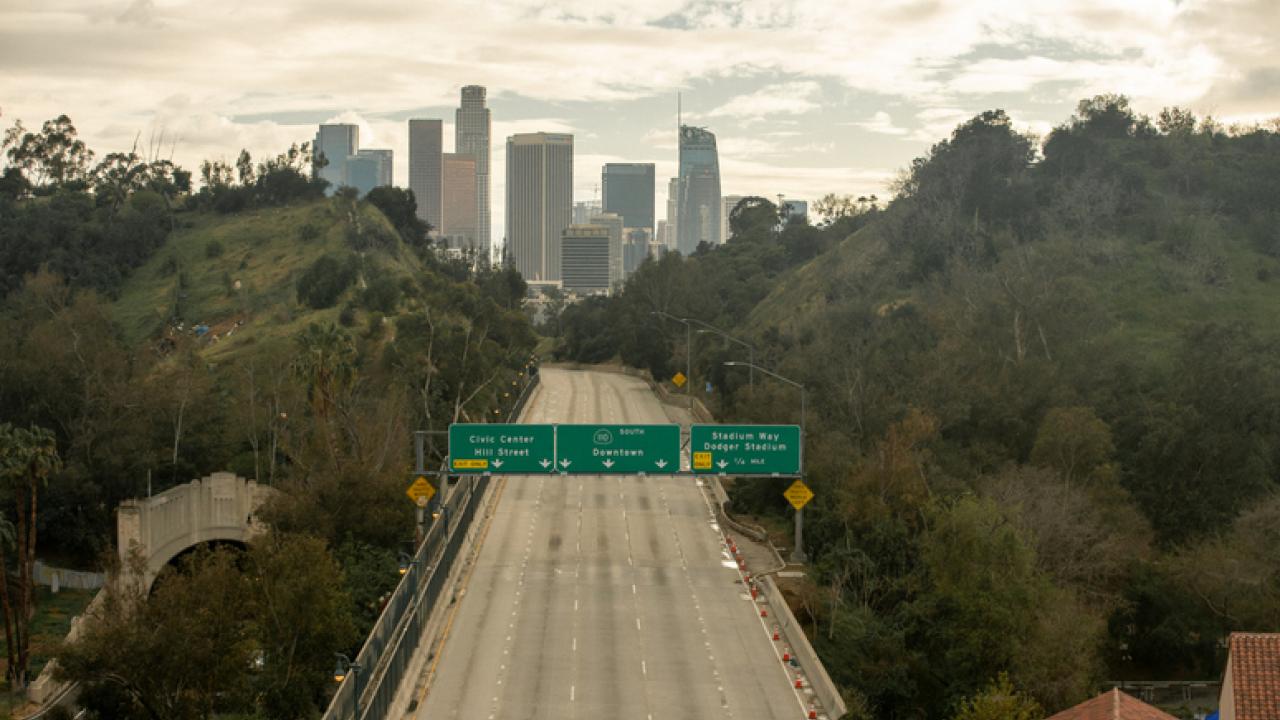The pandemic completely shifted how people move. Personal transportation changed due to safer-at-home orders. The Monday morning commute to work on campus and time in rush hour traffic after a long day of classes at UCLA vanished.
As California prepares for a more extensive reopening in mid-June, people will be traveling by car more often and farther. Before jumping back behind the wheel, see what you’ll be facing out on the streets.
Traffic is back — big time!
Los Angeles is the fifth most congested city in the United States, according to an annual study released by transportation analytics firm Inrix Inc.
On the 2020 Global Traffic Scorecard, Los Angeles moved up one slot in the rankings, with the average commuter in the LA metropolitan area losing 45 hours per year to congestion, costing an average of $664 per driver in time lost.
SoCal traffic will get even busier as businesses and schools reopen. Bypass congestion induced headaches with better alternatives like taking public transit, riding a bike, or both.
Gas prices are up
The average price of a gallon of self-serve regular gasoline in LA County rose on April 3 for the ninth time in 11 days, increasing to the highest amount since November 2019.
According to the American Public Transportation Association, individuals who ride public transportation instead of driving can save, on average, more than $800 per month. A 2018 report shows an average annual savings of over $10,000 for a person who switches their daily commute from driving to taking public transportation.
Air quality impact
During the first COVID lockdown in the spring of 2020, there was a remarkable boost in air quality. But those early air quality gains couldn’t overpower a return to driving. As restrictions loosened, traffic rebounded, clogging the skies.
A December 2020 study led by UCLA professor Yifang Zhu found that traffic reductions in Los Angeles last March and April were directly responsible for a roughly 30% decrease in nitrogen oxides, a common tailpipe emission. Air pollution is a public health problem, and fewer cars mean cleaner air.
Better Ways to Move
COVID-19 created new momentum for walking and biking. As motor vehicles on the road plummeted, walkers and riders took to the sidewalks and streets. Countless research shows active transportation is much better for you than driving, so why not keep that positive momentum going and emerge from this public health crisis healthier and happier?
And with new federal aid, LA Metro will be restoring bus and train service to pre-pandemic levels by September — right in time for the start of a new academic year at UCLA!
As plans come together for a fall reopening, with more Bruins back on campus working and going to school, take into account everything alternative transportation options offer.
Credit: Getty Images






